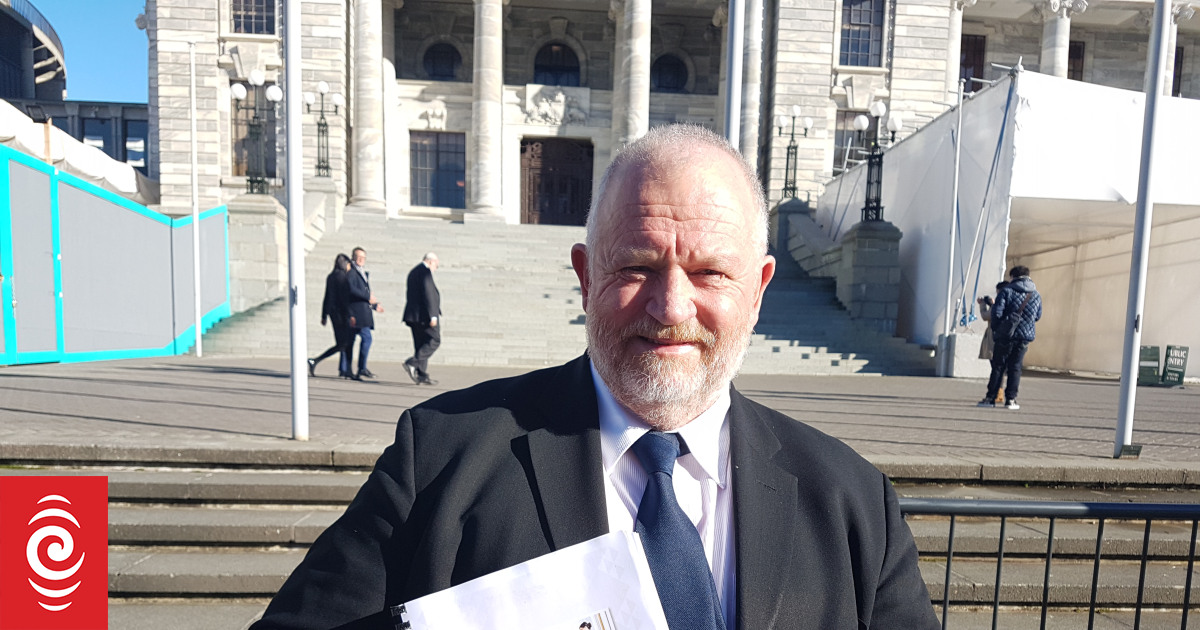New Zealand’s only cement producer is already a world leader in sustainable production but wants to continue reducing its carbon footprint.
Golden Bay’s Portland plant, just south of Whangārei, uses old tyres and treated timber in its manufacturing process to replace 55 to 60 per cent of the coal it used to rely on.
The company, a division of Fletcher Building, wants to be coal-free by 2030, said manufacturing manager Kelly Stevens.
Old tyres have been part of Golden Bay’s cement process since 2021, with the Ministry for the Environment helping fund $16 million of the $25m cost to upgrade the plant to take tyres.
The tyres are shredded, then combusted at high heat – around 1500C – to reduce any fumes, with the residual rubber, metal and ash combined into the cement-making process.
Stevens explained how cement is the glue that holds concrete together, primarily made made from processed limestone and cement rock, with added iron sand and gypsum.
The old tyres add to the process, with the steel inside the tyres helping replace the amount of iron sand that needs to be added, she said.
“They are a fantastic fuel – it runs much better when we have the tyres running.”
Stevens said Golden Bay has increased the amount of tyres it uses from 15,000 tonnes a year to 30,000 tonnes, and would like to use up to 40,000 tonnes.
The Government’s tyre stewardship programme, Tyrewise, will help by setting up a system to collect and transport tyres for re-use. The programme is funded by a small fee paid on each new tyre sold from March this year.
Golden Bay has also invested significantly, buying its own shredder which, since December, has meant tyres can be dropped off for free and shredded onsite, Stevens said.
“We’re diverting 100,000 tonne of waste a year that would’ve gone to landfill,” she said.
With the shredder being portable, Golden Bay could even look at running shredding campaigns, such as in the South Island, she said.
Stevens said the company now wants to replace the coal used at the front-end of the cement production, which she described as a “massive flame thrower” in the plant’s kiln.
It hopes to use fuels like old carpet and plastic which cannot be recycled instead of coal, further reducing the plant’s carbon footprint.
Construction has already started on this project and it is due to be commissioned by the end of the year, Stevens said.
Golden Bay’s general purpose cement, EcoSure, is certified as having the lowest carbon footprint of any cement in New Zealand and has around 30 per cent lower carbon than the international baseline.
Its plan to be coal-free by 2030 will further reduce emissions by 30 per cent.
Thornton Williams, Fletcher Building acting chief executive – concrete division, said Golden Bay’s kiln was a valuable asset for New Zealand’s waste management.
He would like to see cement products sold in New Zealand fairly priced to reflect the environmental impact, such as through the Emissions Trading Scheme.
“As a proud New Zealand company that employs a large number of Kiwis, we’re very supportive of creating a level playing field with carbon emissions,” he said.
The number of Kiwis, and Northlanders, employed by Golden Bay cement was demonstrated during its two-week maintenance shutdown during May.
Normally, 140 to 150 people are on-site manufacturing but an extra 150 contractors were hired during the shutdown to carry out maintenance work 24/7 over the 14 days.
Stevens said the twice-yearly shutdown costs between $3m and $5m and was completed on May 27.
Girl power encouraged at Golden Bay
Increasing diversity in its workforce is one of the aims of Golden Bay, which sponsors Women in Infrastructure Northland and Girls in Infrastructure events, Stevens said.
She “fell into engineering” at Massey University, after discovering veterinary studies wasn’t for her and being advised there were plenty of jobs in engineering.
After studying chemical engineering, Stevens was employed through Fletcher Building’s graduate programme and placed at Golden Bay’s Portland plant because she wanted to be closer to her home in Kaitāia.
More than 20 years later – having travelled overseas, had a family and moved up the ranks – Stevens said Golden Bay still holds plenty of interest for her.
Another sponsorship she is proud of is supporting the restoration of Matakohe-Limestone Island, where the cement works originally started in 1901.
Denise Piper is a news reporter for the Northern Advocate, focusing on health and business. She has more than 20 years in journalism and is passionate about covering stories that make a difference.



